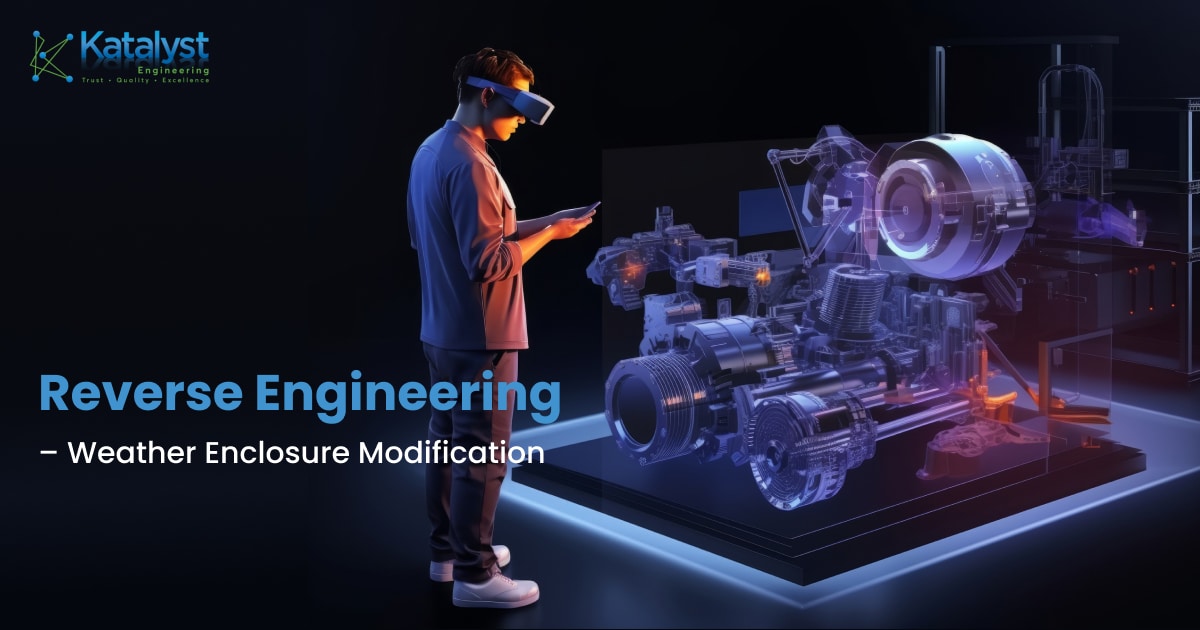
At Katalyst Engineering Services, we continually strive to drive innovation by deftly utilizing these resources, changing the issues encountered by various industries and fields with potential solutions.

At Katalyst Engineering Services, we continually strive to drive innovation by deftly utilizing these resources, changing the issues encountered by various industries and fields with potential solutions.

The client, a leading lawn irrigation equipment supplier, faced a significant manufacturing hurdle — the lack of accurate CAD models or technical drawings for their tractor’s weather enclosure. This posed challenges in repeated manufacturing, maintenance, and design improvements. To overcome this, they partnered with Katalyst Engineering to implement a precise reverse engineering solution aimed at creating detailed CAD models, streamlining production, and optimizing future modifications.
The client approached Katalyst Engineering with two primary objectives:
Solution Approach:
Katalyst Engineering adopted a structured, agile methodology tailored to precision, accuracy, and manufacturability. The reverse engineering project was executed in a five-phase approach to ensure efficiency and data integrity:
The client provided the physical weather enclosure assembly as input. The engineering team performed a thorough assessment to understand structural components, key design features, and dimensional needs.
Katalyst’s experts meticulously measured every component using advanced precision tools such as Vernier Calipers, Micrometers, Radius Gauges, Measuring Tape, and Ruler Scale. Every dimension was verified for accuracy to avoid errors in later stages.
The team translated physical measurements into detailed hand sketches. These sketches captured component layouts, dimensions, joint placements, and mechanical fitments, forming the foundational blueprint for CAD modeling.
Using PTC Creo and industry-leading CAD software, the team developed highly accurate 3D models and 2D drawings. These models were enriched with precise dimensions, assembly instructions, and manufacturing annotations. The models were designed to be compatible with the client’s existing production workflow.
A stringent quality check process ensured the CAD files were dimensionally accurate, production-ready, and error-free. The final deliverables included:
$nbsp
$nbsp
By converting physical assemblies into accurate digital models, Katalyst enabled the client to reproduce parts on demand, reducing downtime and manual errors.
The transition from manual manufacturing to CAD-driven production significantly reduced manufacturing errors. Accurate dimensions ensured proper fitment, leading to fewer assembly line disruptions.
The reverse-engineered designs were optimized for manufacturability. The client achieved significant cost savings through design standardization, reduced material waste, and minimized rework.
With fully digitized design assets, the client gained flexibility for future design improvements, product modifications, and scaling manufacturing without additional reverse engineering efforts.
The transformation was visually documented in several stages:
$nbsp
This project exemplifies how Katalyst Engineering’s Reverse Engineering Services drive tangible value for manufacturers. By converting a physical assembly into precise CAD models, the client improved production accuracy, reduced costs, and secured a robust engineering foundation for future manufacturing cycles.
If your business faces similar challenges—whether lacking CAD models, needing product redesign, or aiming for production efficiency—partner with Katalyst Engineering for trusted, high-quality, and precise engineering solutions.
Need help understanding our services in depth? Our team of experts will specify everything you require. Tap on the Contact Us button and connect with our team today!
